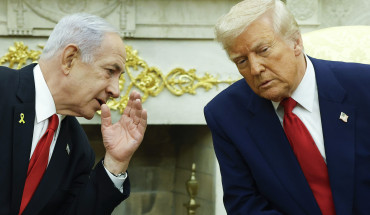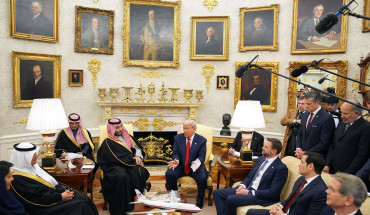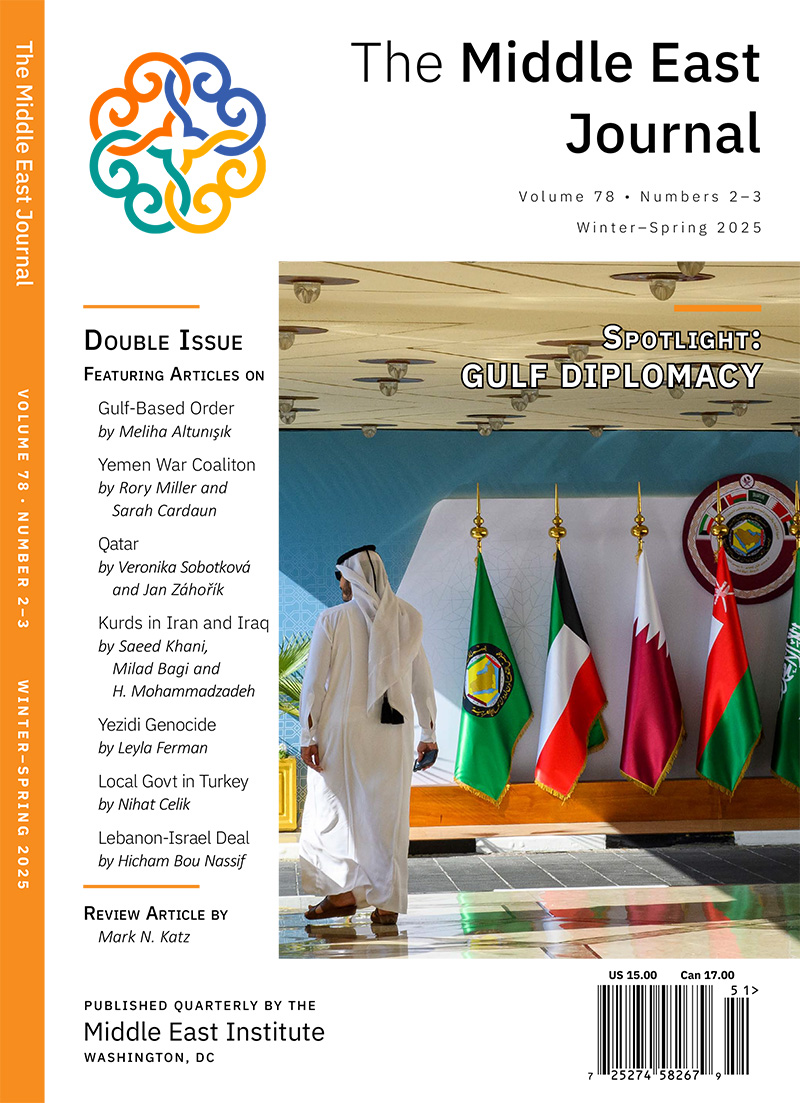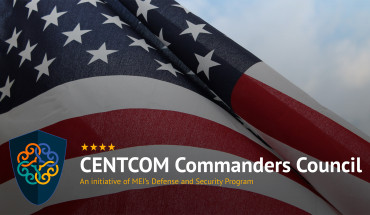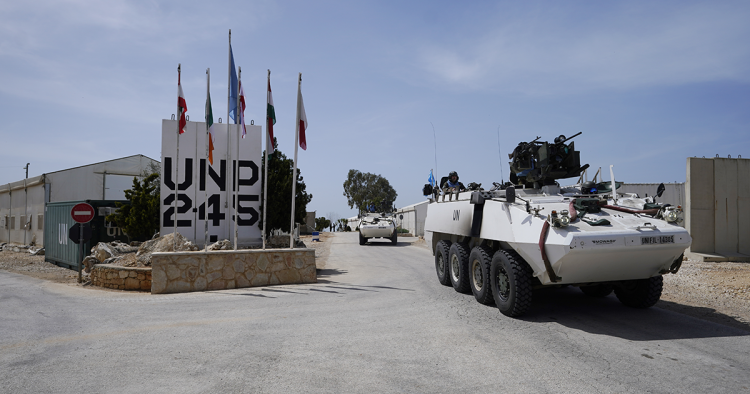At the end of August, the future of the United Nations Interim Force in Lebanon (UNIFIL), established nearly 50 years ago, goes on trial in New York, where the Security Council will debate the renewal of its mandate. Nearly two decades after its transformation under UN Security Council Resolution 1701, UNIFIL is now part of the problem it was created to solve. Ten thousand blue helmets from almost 50 countries, including major North Atlantic Treaty Organization (NATO) members, failed to stop the latest conflict between Israel and Hizballah, and, if business continues as usual, will fail to prevent the next.
In the Security Council, the debate has fallen into a familiar pattern: tweak UNIFIL’s mandate and resources or scale back a mission seen as inherently ineffective. This framing misses the core problem: UNIFIL’s unwillingness, as opposed to inability, to take on the risks its mandate requires.
Peacekeepers can still help end southern Lebanon’s long chapter as a slow-burning threat to international security if the world stops pretending UNIFIL, as it stands, is the answer. A critical opening has emerged for UNIFIL following the Lebanese government’s decision to commit to disarming Hizballah by the year’s end and endorse the objectives of the August plan proposed by the United States to comprehensively address the broader conflict with Israel. By helping the Lebanese state reassert full authority in southern Lebanon, ensuring a smooth and complete Israeli withdrawal, and preventing Hizballah’s return to the border, UNIFIL can stabilize the south and, in doing so, support local and international momentum for Hizballah’s broader disarmament and the restoration of Lebanon’s sovereignty. To meet the moment, it must be radically restructured to deliver a clear signal: the era of risk-averse peacekeeping is over, replaced by an assertive mission committed to enforcing its sovereignty-enhancing mandate by any means necessary. If the Security Council cannot deliver that shift, then Washington should block UNIFIL’s renewal and channel its support directly to the Lebanese Armed Forces (LAF).
What went wrong with UNIFIL
The 2006 war between Israel and Hizballah left southern Lebanon a volatile powder keg. In response, the Security Council adopted Resolution 1701, expanding UNIFIL from fewer than 2,000 troops to an authorized ceiling of 15,000 and charging it with supporting the LAF’s objective to assert itself as the sole armed presence between the de facto border known as the Blue Line and the Litani River. For a time, especially in the first year that saw active efforts by NATO-member contingents to implement its mission, UNIFIL appeared ready to monitor and secure that buffer zone.
At first, Hizballah, mindful of domestic fatigue and heightened international attention, maintained a discrete military presence. Still, it tested the resolve to enforce Resolution 1701 and by 2007 had largely undermined UNIFIL’s writ. A decade later, as Hizballah’s campaign in Syria waned, it took a more aggressive posture in southern Lebanon: setting up drone runways, surveillance towers, and complex tunnel systems. UNIFIL largely turned a blind eye, accommodating Hizballah’s rules of engagement at the expense of its own. As Hizballah’s footprint grew, UNIFIL’s credibility diminished. The situation deteriorated so severely that Lebanon and Israel were at war just a day after Hamas’ attack on Israel on Oct. 7, 2023. Unlike in 2006, when UNIFIL was a key pillar of the post-war plan for Lebanon, by the November 2024 cease-fire, it had faded into near irrelevance.
The mandate is not the problem
UNIFIL’s shortcomings are often pinned on its Chapter VI mandate, which ostensibly confines it to peacekeeping rather than enforcement, and on its supposed dependence on the willingness of the Lebanese authorities to cooperate. This misdiagnosis has led to the familiar prescription that simply modifying the mandate would translate into a more robust force. But neither accurately explains the mission’s failure.
When Resolution 1701 was passed in August 2006, it fell short of the French-American push for a Chapter VII mandate, which allows the Security Council to determine what constitutes a threat to international peace and security and authorize the use of force to resolve such threats. At the time, Lebanon’s government feared doing so would undermine its legitimacy. Still, the final text incorporated muscular language typically reserved for Chapter VII. It declared the situation in Lebanon “a threat to international peace and security” and authorized UNIFIL to “take all necessary action” to prevent hostile activities and resist obstruction. The result was a hybrid “Chapter VI-and-a-half” mandate that authorized UNIFIL to use armed force and positioned it between traditional peacekeeping (Chapter VI) and peace enforcement (VII).
The behavior of UNIFIL troops in the immediate aftermath of 1701 made clear that its robust mandate was understood and acted upon. Spanish, French, and Italian contingents patrolled Hizballah-dominated areas in the south, documented military sites, and mobilized to uncover hidden arms caches. The mission encountered protests from Hizballah-aligned locals but remained undeterred.
The turning point came in June 2007, when a roadside bomb killed peacekeepers from the Spanish contingent. A series of similar attacks on French and Italian convoys in 2011 demonstrated Hizballah’s ability to test UNIFIL’s resolve. These forces represented ideal targets for Hizballah, ones they could leverage to exact pressure on NATO powers with influence on Lebanon’s fragile political scene yet maintain formal deniability. Its effect was clear. France, the most influential troop contributor, repeatedly framed its policy choices on Lebanon, including the question of designating Hizballah as a terrorist organization, around concerns for the safety of its peacekeepers. This calculus, coupled with the UN’s own penchant for prioritizing mission longevity, saw UNIFIL redirect its focus to secondary objectives like mediation, documentation, and communal outreach to justify its renewal.
A deeper critique of UNIFIL’s mandate centers on its perceived dependence on the Lebanese state to carry out its mission. UNIFIL officials regularly protest that the mission is hamstrung by a mandate requiring cooperation with the LAF and state authorities. But this overly literal interpretation misreads the spirit of the resolution. The language of assistance, as expressed in the resolution’s preamble, was intended to welcome the Lebanese government’s request for UNIFIL’s support in strengthening the LAF’s capacities, not to restrain UNIFIL’s freedom of movement. The proactive approach of the Spanish, French, and Italian contingents before the 2007 attack — to seek out Hizballah military caches without being called on by the Lebanese authorities to do so — was a clear acknowledgement of that reading, demonstrating a more assertive interpretation of the mandate was both possible and, initially, pursued.
In any case, the debate over the spirit of the text became moot after Resolution 2650, passed in 2022, made explicit what had long been implicit: “UNIFIL does not require prior authorization or permission to undertake its mandated tasks and that UNIFIL is authorized to conduct its operation independently,” including through “announced and unannounced patrols.” The amendments were designed to respond to Hizballah’s military buildup and clarify any misunderstandings regarding UNIFIL’s freedom of operation. The significance of the change could be immediately observed. For the first time since 2006, China and Russia abstained from voting. Hizballah denounced the resolution, and the Lebanese government, under Hizballah influence, challenged it. But instead of embracing this strategic clarification, UNIFIL’s leadership publicly downplayed it, going out of its way to ensure the rules of engagement that defined the status quo in southern Lebanon would remain the same. UNIFIL spokesperson Andrea Tenenti hastily insisted “nothing will change in the work of the U.N. peacekeeping force with the latest renewal of its mandate” and went as far as stating that the resolution “contains the same wording that was used in 2006.”
After the November 2024 cease-fire, with mounting pressure on UNIFIL to prove itself as the Security Council vote on its renewal approached, it worked to support the transition as Israeli troops withdrew and were replaced by the LAF, reporting the discovery of numerous clandestine tunnels and weapons caches. Tenenti moved from reassuring that Resolution 2650 would not alter realities on the ground to stressing that “peacekeepers can move independently in south Lebanon in performance of their duties to restore security and stability under Resolution 1701. They do not need to be accompanied by Lebanese soldiers.” The shift in behavior demonstrated not only that mandate authority was never the real obstacle but also that where there is a will, there is a way.
On the ground, however, the change came too little too late. UNIFIL still informs the LAF in advance of patrols. In turn, its peacekeepers are usually met by Hizballah-aligned residents determined to obstruct them, up to the point that the LAF is brought in to defuse the situation. The perpetrators are not held accountable, and patrol objectives routinely go unmet. This pattern suggests that while UNIFIL recognizes it must prove its mettle to secure renewal, its interpretation of its mandate owes less to the text than to its instinct for survival, one that continues to favor avoiding confrontation with Hizballah.
The myth of inadequate means
Concerns that UNIFIL suffers from inadequate means do not hold up under scrutiny either. UNIFIL’s manpower, armament, and command structure adds up to a force that, by peacekeeping standards, is well resourced. Moreover, it is unclear how a boost in any of the means it has to fulfill its mission would have changed how it operated.
The most visible indicator of capacity is its deployment size. After the 2006 war, UNIFIL transformed from a modest formation of 2,000 international troops to 12,000 by early 2007. Although the Security Council authorized up to 15,000 personnel, the mission gravitated to an average of 10,000 troops overseeing an area of 1,060 square kilometers, still making it the highest density of peacekeepers per area covered of any UN mission. By comparison, the UN Organization Stabilization Mission in the Democratic Republic of the Congo (MONUSCO) has around 10,000 troops deployed with an authorized cap of a bit over 16,000 uniformed personnel across an area spanning 2.3 million square kilometers. The UN Multidimensional Integration Stabilization Mission in Mali (MINUSMA) operated with around 13,000 military and police personnel across 1.2 million square kilometers. That UNIFIL never reached its ceiling is neither exceptional nor indicative of a deficit. On the contrary, the reduction from 12,000 to 10,000 troops reflected the judgement that more boots on the ground were not needed.
A second pillar of capability is armament. If the original UNIFIL force could be described as lightly armed, UNIFIL after the passage of Resolution 1701 is anything but. Its inventory includes mechanized units, artillery, armored vehicles, and air-defense systems, assets typical of a robust mission. Adding to that muscle was the deliberate effort to infuse the force with contingents from NATO powers, like France, Italy, and Spain. Between 2006 and 2010, troops from NATO countries made up the majority of UNIFIL. UNIFIL was so well resourced that in 2006, the French defense minister noted French peacekeepers were “seconds” from firing missiles at Israeli F-15 jets.
Finally, UNIFIL’s capabilities were strengthened by an innovative command-and-control structure. Determined to avoid the command structure failure that undermined past UN missions in Somalia and Yugoslavia, France and its European partners advocated for a structure that ensures operational mobility and a clear chain of command. This resulted in the creation of the Strategic Military Cell (SMC) in New York in 2006 headed by a four-star general and designed to provide strategic-level guidance. In practice, it gave major European contributors oversight and influence over the mission’s direction. The SMC was so exceptional for UN peacekeeping missions it drew criticism from non-Western troop contributors deployed in high-risk theaters across Africa not afforded a similar command structure.
UNIFIL’s mindset is the problem
UNIFIL was primarily tasked to support the establishment of a buffer zone between the Blue Line and the Litani River. To achieve that goal, it was entrusted with a robust mandate and ample resources that gave it freedom of movement and resources few international peacekeeping missions enjoy. Since its transformation under Resolution 1701 in 2006, it has allowed that territory to fall under Hizballah’s control. UNIFIL’s story is not one of a mission set up to fail or neglected along the way. It is one of a mission that chose survival over success by accommodating the very spoiler it was meant to remove. The combination of troop-donors’ low casualty threshold and the UN’s bent toward mission longevity produced a hostage mindset whereby UNIFIL was determined to justify its renewal but unwilling to absorb the costs that came with confronting Hizballah and so drifted away from the robust objectives its mandate authorized and its resources empowered it to pursue. That mindset, more than any issue with mandate language or mission resources, explains UNIFIL’s failure.
Today, however, it is UNIFIL’s accommodation of Hizballah that threatens the renewal of its mission. Washington can leverage this pressure to jolt the mission out of its dysfunctions and enable a strategic reset. Hizballah’s setbacks, including the degradation of its arsenal, loss of its rearmament routes through Syria after the fall of Bashar al-Assad’s regime, and elimination of the leadership that guided its adaptation after the 2006 war, have also produced a more favorable context. The November 2024 cease-fire paved the way for a new Lebanese government to gradually deploy 10,000 national soldiers in southern Lebanon alongside a similar number of international peacekeepers. The US plan endorsed by Beirut earlier in August also sets the stage for a phased disarmament of Hizballah and an Israeli withdrawal from five occupied hilltops in Lebanon’s south. If UNIFIL helps prevent Hizballah from reasserting itself along the border and supports a smooth transition as Israeli troops pull out, it can secure a major win, set a landmark precedent during a formative period, and add credibility to the broader locally led and US-backed effort to restore the Lebanese government’s full sovereignty and decrease the risk of another round of conflict.
If UNIFIL is to succeed, it needs to demonstrate a mission implementation mindset. With Paris advocating for UNIFIL’s renewal, the peacekeeping force’s most convincing move could be to respond to Washington’s threat of gutting the force by giving credible guarantees that it is prepared to absorb the costs that come with confronting spoilers. Improvements in the mandate and make-up of the force matter insofar as they are part of the strategic objective of shifting UNIFIL’s mindset. Changes to UNIFIL, both textual and practical, should bring about a shock effect to all parties involved, indisputably signaling a new era.
New language added to the mandate can support such a strategic shift. Building off Resolution 2650’s recognition of UNIFIL’s freedom of movement and ability to conduct patrols independently, additional language should spell out the expectations and responsibilities of what it should do to enforce its mandate: clearing weapons caches, destroying tunnels, and other such activities that go beyond monitoring. The objective is not just to add legal clarity to its responsibilities but also to generate psychological momentum. Such language will signal to Hizballah, the Israelis, the LAF, and troop-donor states that this is a fundamentally transformed force with a new role, posture, and rules of engagement that it is prepared to act on. A crucial step in asserting UNIFIL’s new posture would be to expand its zone of operation beyond the traditional area south of the Litani to include — at the very least — all of southern Lebanon. This would be in line with the terms of the November cease-fire, which state that Hizballah should be disarmed “starting with the Southern Litani area” and then expanding into the rest of Lebanon. The French draft in circulation at the UN Security Council reportedly shows promise of getting this through, clarifying its goal “of making the Lebanese Government the sole provider of security in southern Lebanon.” It also includes provisions for UNIFIL’s withdrawal, a break from the past habituation to mission longevity.
The composition of the force also matters. The model in place from 2006 to 2010, when NATO contingents constituted a majority of the force, should be the path forward. Their assertiveness, professionalism, and military mindset will encourage the momentum needed. Recent French-led operations against significant Hizballah tunnel networks highlight the potential of these forces and the impact they have on shaping UNIFIL’s credibility. This must be matched by a change in UNIFIL’s leadership, tone, and vision. If UNIFIL is to succeed, it needs leaders with the will to implement its mandate by any means necessary and the ability to communicate that convincingly. Nothing would deliver the message of a mission reborn more clearly than a corresponding change in name.
Washington has the trump card and should not be afraid to use it. If the Security Council, troop-donor states, the Lebanese, and UNIFIL are not prepared to accept such a strategic shift, UNIFIL does more harm by staying. Nearly half a century of failure is enough time to say goodbye to an interim mission.
Fadi Nicholas Nassar is a Senior Fellow at the Middle East Institute.
Saleh El Machnouk is a Lecturer at Lebanon’s Université Saint-Joseph (USJ).
Photo by Niall Carson/PA Images via Getty Images
The Middle East Institute (MEI) is an independent, non-partisan, non-for-profit, educational organization. It does not engage in advocacy and its scholars’ opinions are their own. MEI welcomes financial donations, but retains sole editorial control over its work and its publications reflect only the authors’ views. For a listing of MEI donors, please click here.






